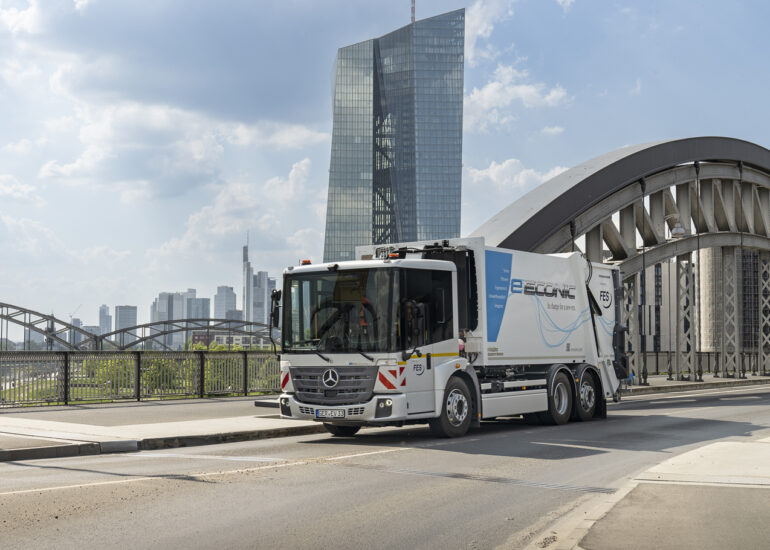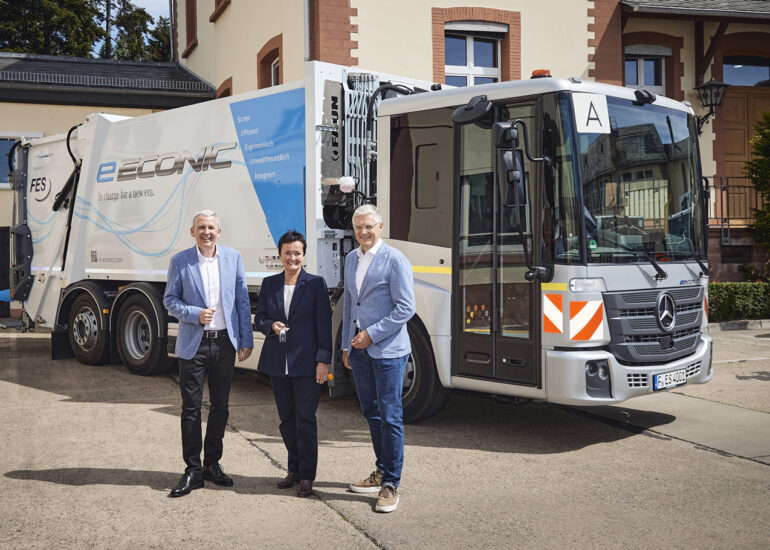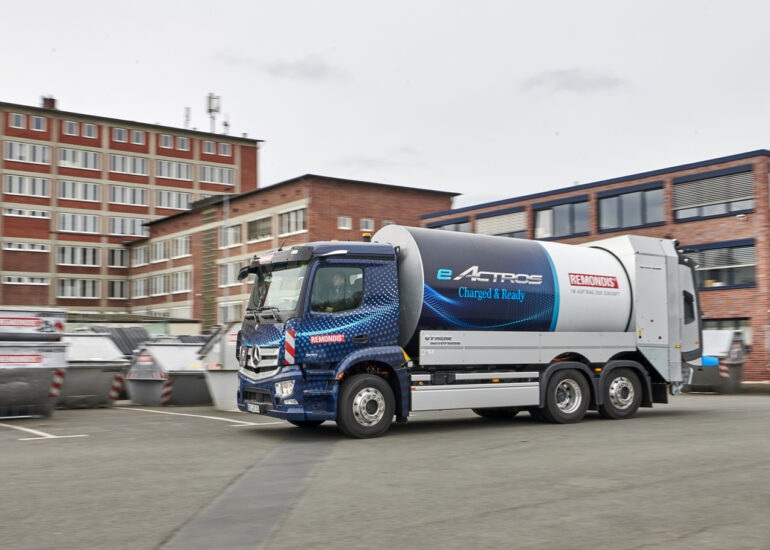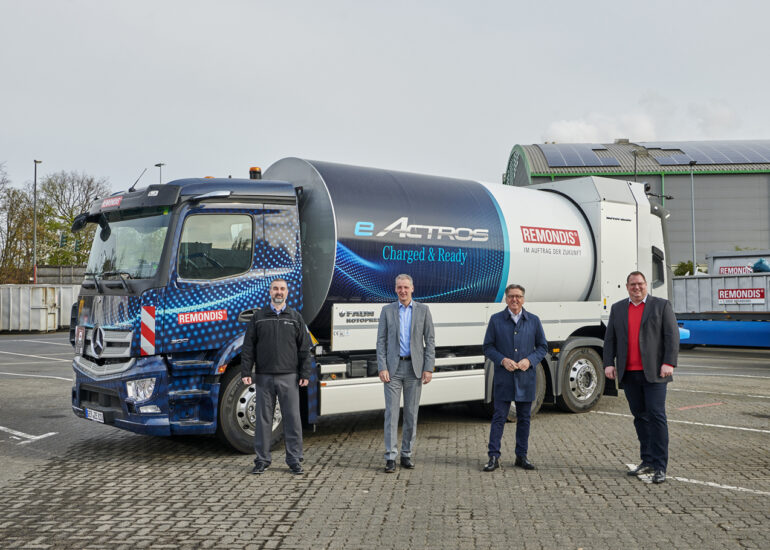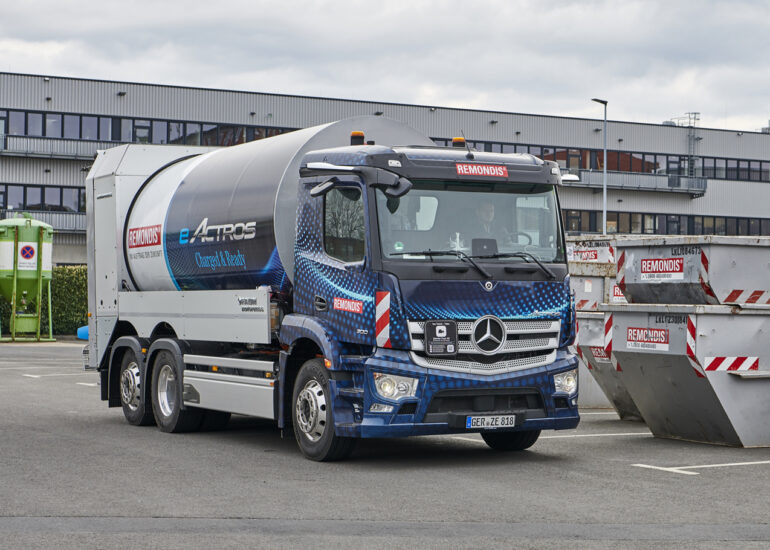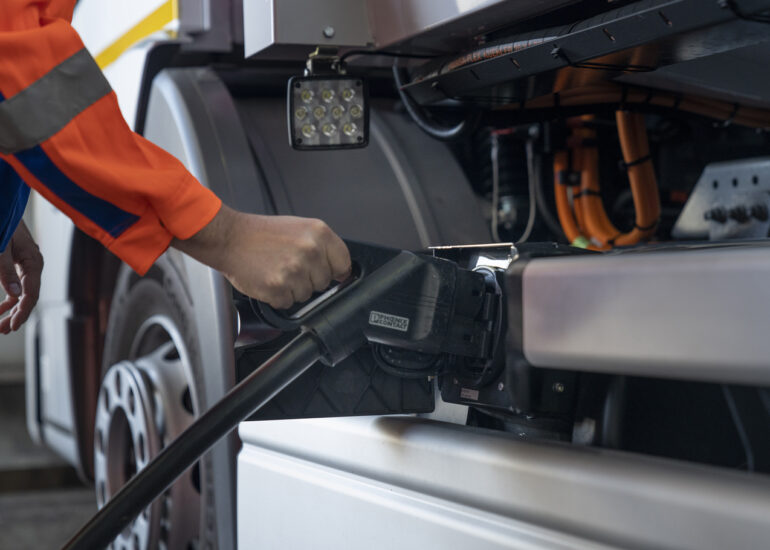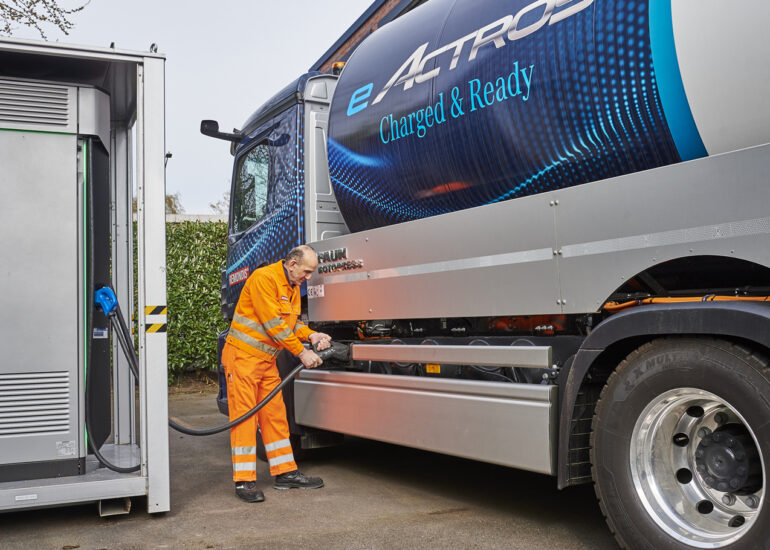Taking out the trash electrically
Taking out the trash electrically
With the launch of its eActros nearly a year ago, Mercedes-Benz Trucks offers an electric truck suited to specialised applications. But this isn’t the manufacturer’s only electric vehicle rising to the occasion…
Since the start of the eActros series production in October 2021, Mercedes-Benz Trucks has been gradually expanding the range of applications of its e-truck for heavy-duty distribution. The e-truck is available in Germany, Austria, Switzerland, Italy, Spain, France, the Netherlands, Belgium, Great Britain, Denmark, Norway, and Sweden, with further markets – including South Africa – to follow. You can expect to see the eActros on our roads by 2024/25 (check out all of the eActros’ specs in our article “eActros breaks cover”).
A battery-electric eActros configured as a waste collection vehicle has been deployed at Remondis, a German multinational company for recycling, waste resource management, and industrial and communal services, since April of this year.
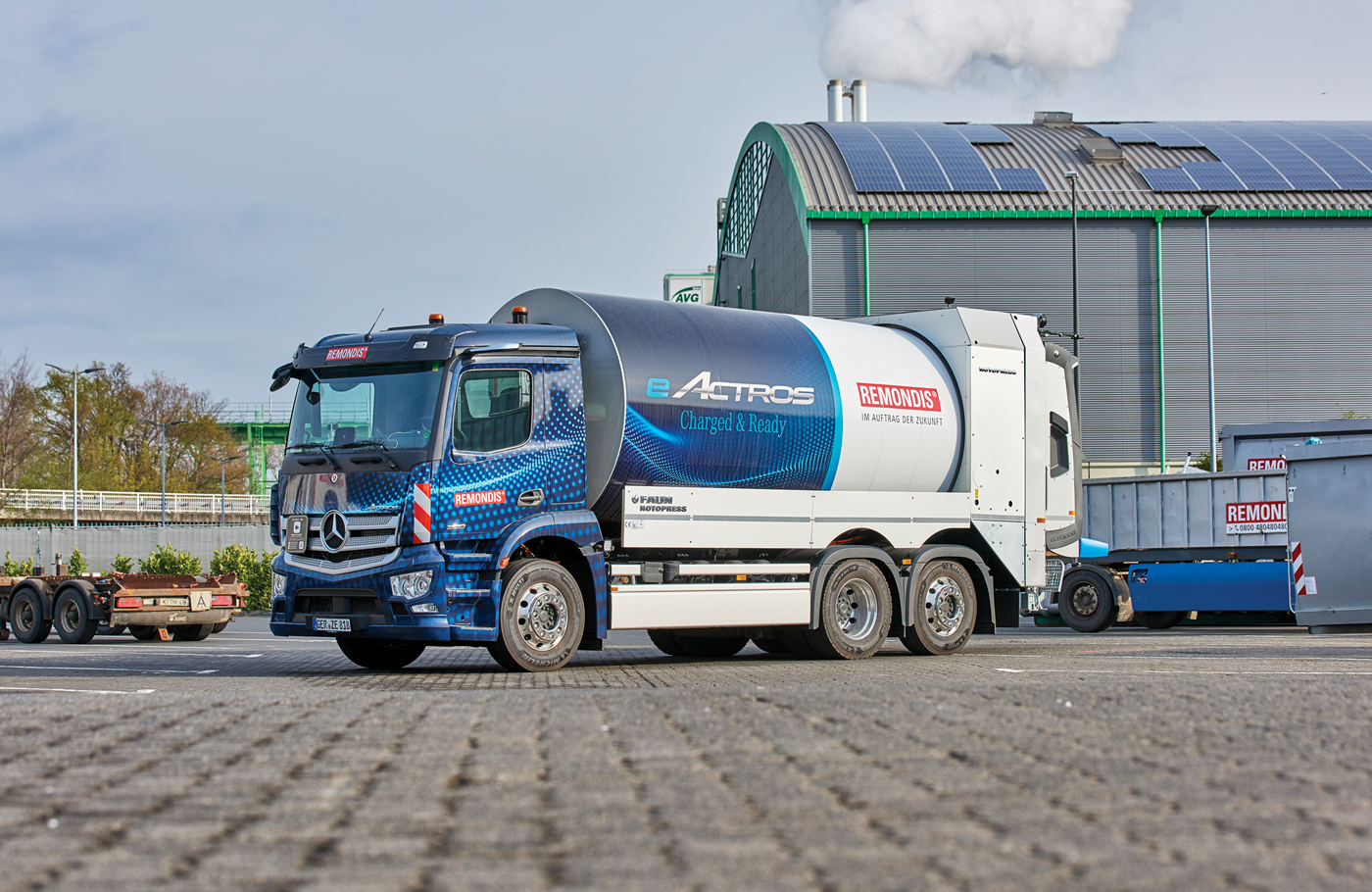
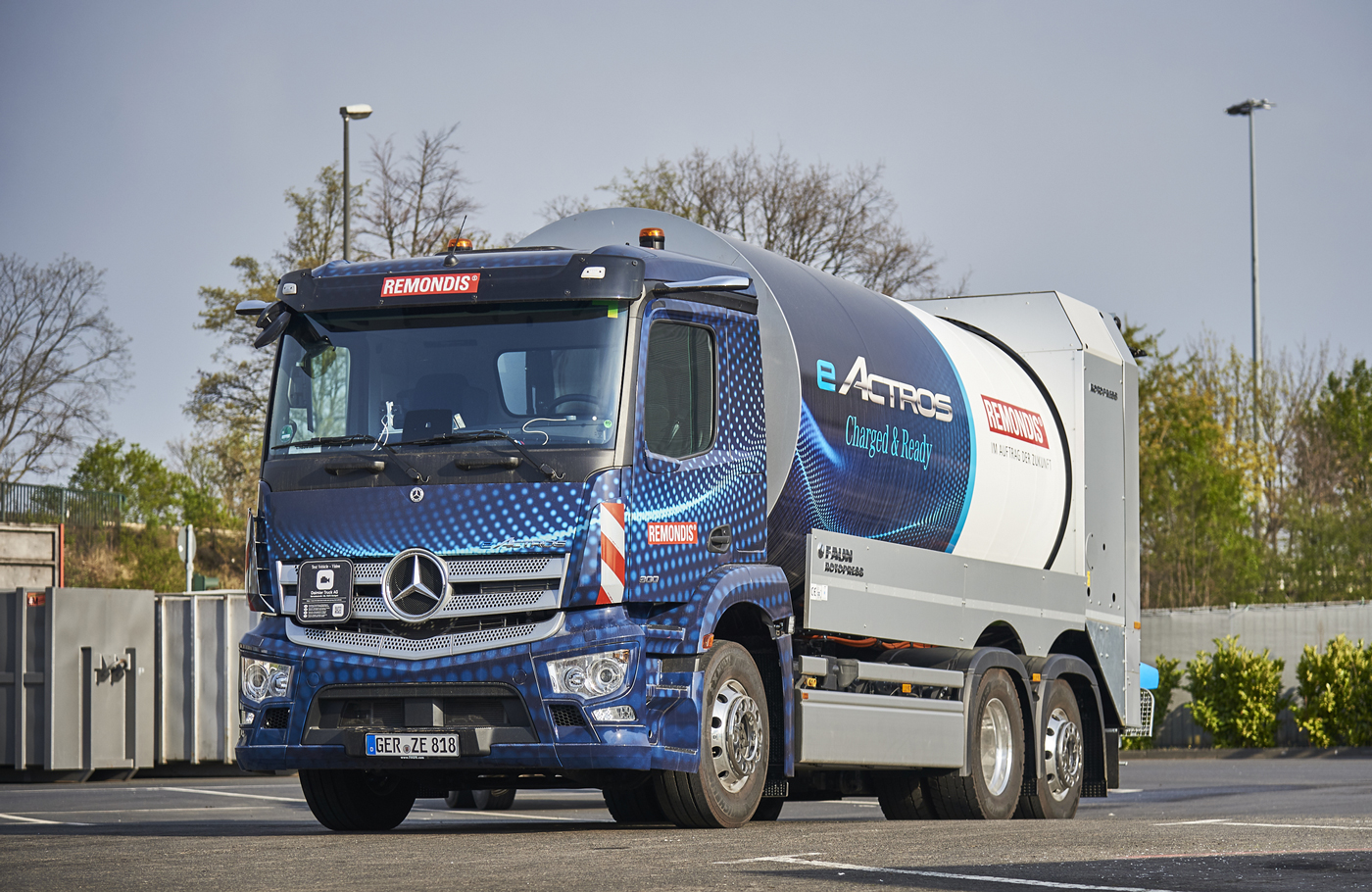


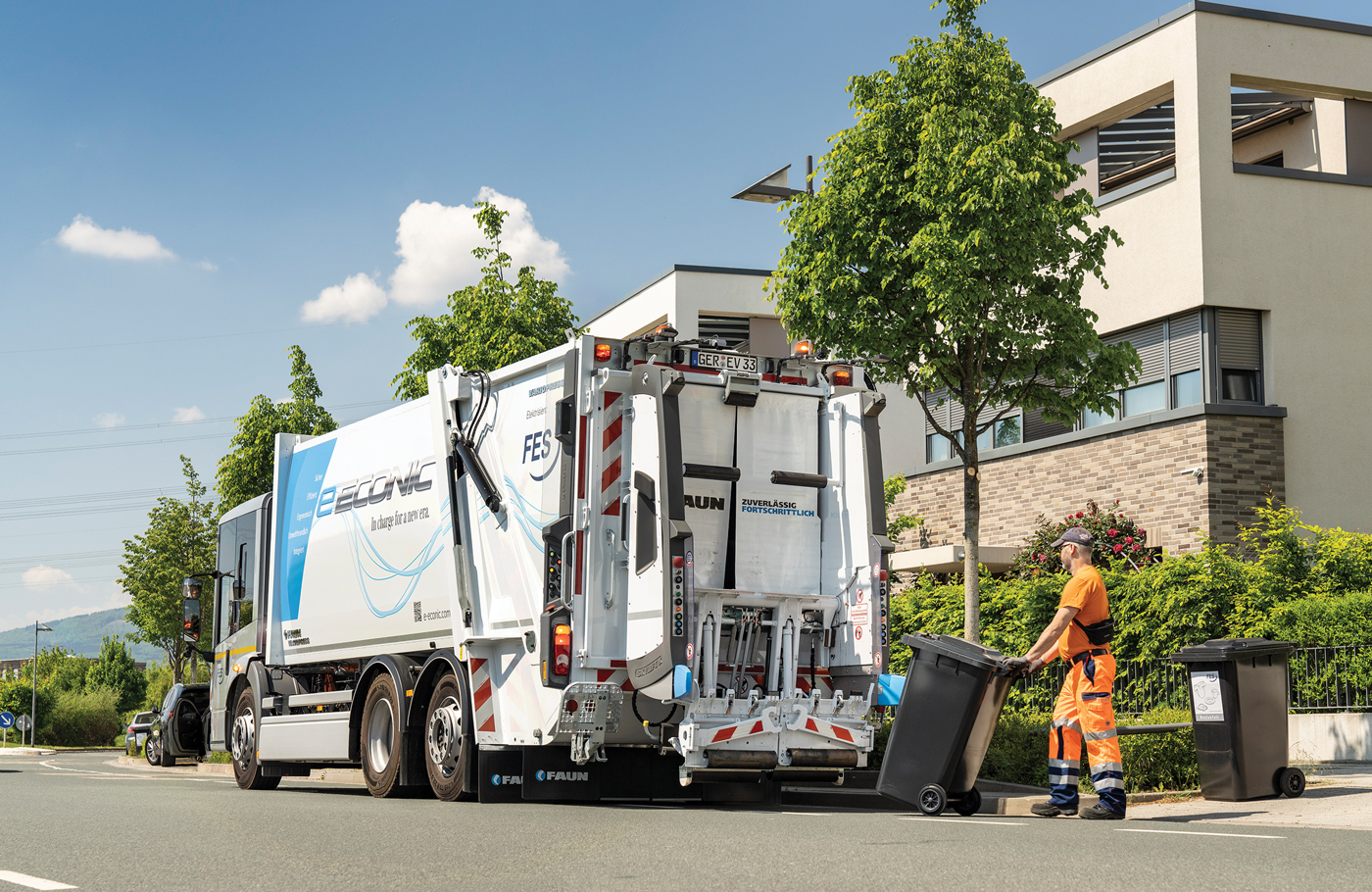
For this purpose, the e-truck is equipped with a fully electrically-operated rotary drum system from FAUN, one of Europe’s leading manufacturers of waste disposal vehicles. FAUN’s Rotopress system has a capacity of 21 m3 and is especially low-maintenance. Remondis uses the eActros in the inner-city area of Cologne for commercial customers’ waste disposal, while municipal waste collection is also planned in the Rhineland region.
But this eActros isn’t the only electric vehicle that is rising to the waste disposal occasion. FES Frankfurt Disposal and Service is using a near-series eEconic e-truck from Mercedes-Benz Special Trucks for municipal waste collection in Frankfurt am Main. This is part of the final test phase of the Mercedes-Benz eEconic before the start of series production.
The vehicle was officially handed over to Dirk Remmert, technical managing director of FES, by Dr Ralf Forcher, head of Mercedes-Benz Special Trucks, during a press conference at FES headquarters in Frankfurt-Bornheim.
“After having successfully completed the internal test series, we are now initiating the final test phase with practical testing at customer sites before the upcoming start of series production. We are delighted that FES is relying on our eEconic and is testing it intensively in municipal applications,” says Forcher.
Rosemarie Heilig, department head in Frankfurt and chairperson of the supervisory board at FES, adds: “We can no longer ignore climate change, noise, and fine dust pollution. As a city, we have to be a role model and also rely on low-emission vehicles for our urban commercial vehicles. FES, as a partner of the city, is switching to environmentally-friendly waste disposal. This makes Frankfurt one of the first cities in Germany to consistently move towards e-mobility and the reduction of harmful emissions of its commercial vehicles.”
The eEconic has a permissible gross weight of 27 tonnes. As is the case with the eActros for distribution haulage, the technological heart of the eEconic is the drive unit: an electric axle with two integrated electric motors and a two-speed transmission. The batteries of the eEconic series-production model consist of three battery packs, each with an installed capacity of 112 kWh and a usable capacity of around 97 kWh. Both liquid-cooled motors generate a continuous output of 330 kW, as well as a peak output of 400 kW.
When driving with foresight, electrical energy can be recovered through recuperation — a major advantage, especially in the stop-and-go operations of refuse collection. At the end of the daily routes, the batteries of the electric truck can be recharged with up to 160 kW at customers’ depots. In addition, the eEconic’s vehicle architecture benefits from Daimler Trucks’ global platform strategy: the drivetrain of the low-floor truck is based on the Mercedes-Benz eActros.
Daimler Truck has set itself the goal of offering only new vehicles that are carbon-neutral in driving operation (“tank-to-wheel”) in Europe, Japan, and North America by 2039. It will also be interesting to see what other electric trucks make it to our shores after the eActros hits our roads in 2024/25.
Published by
Jaco de Klerk
focusmagsa

